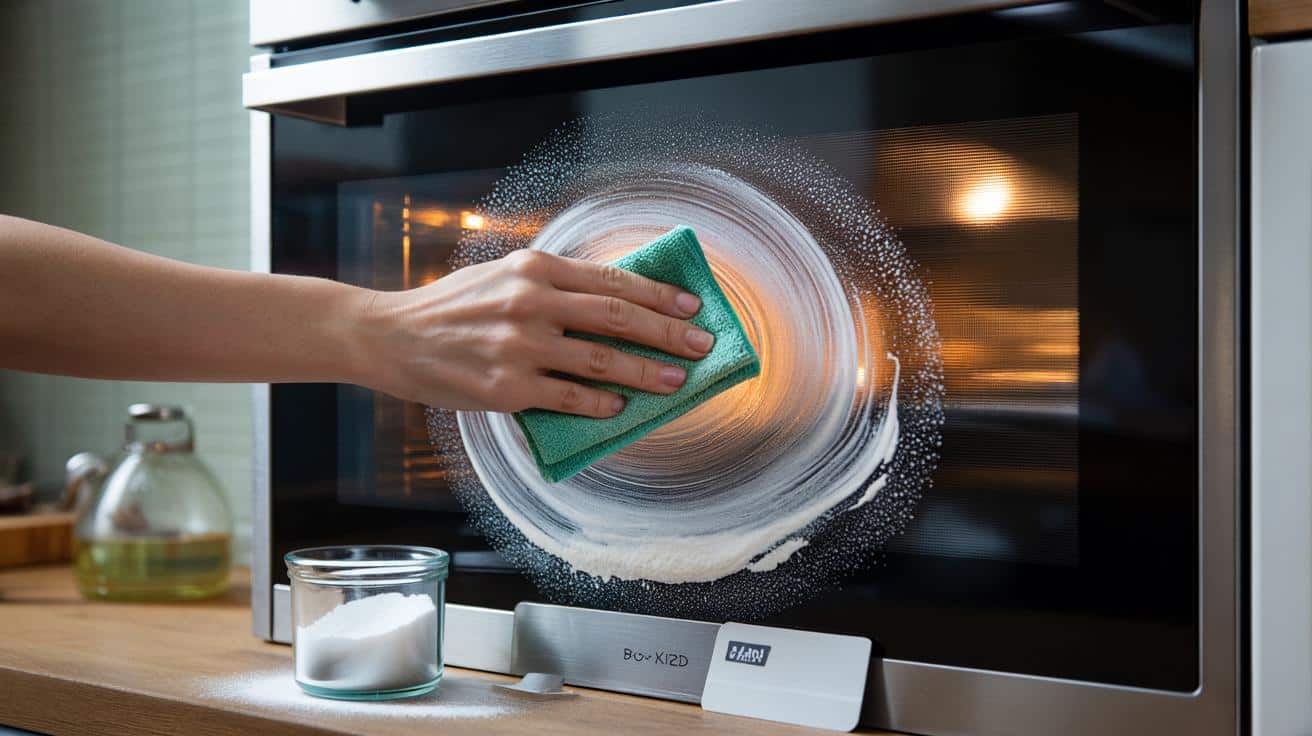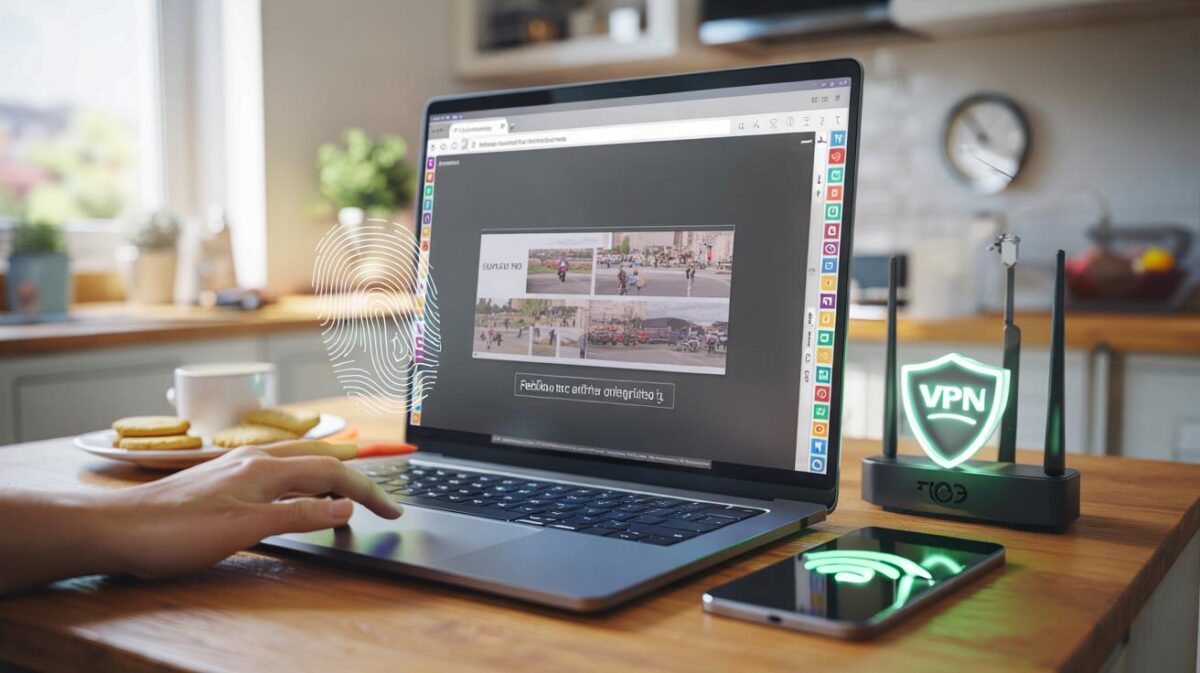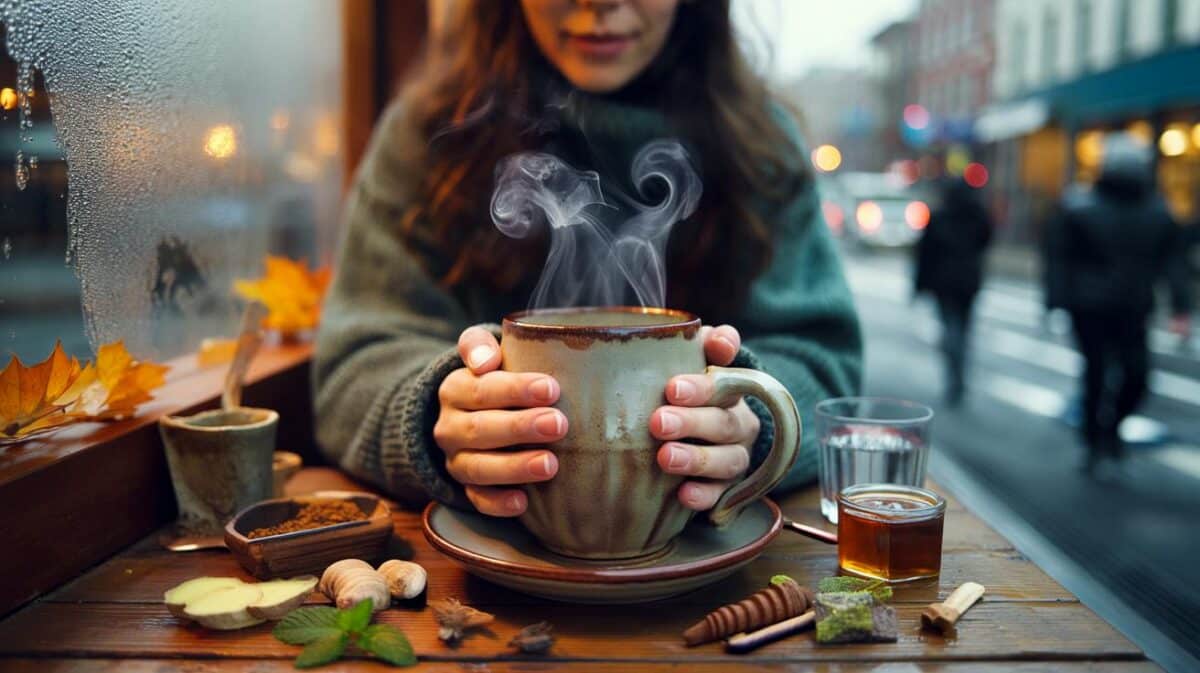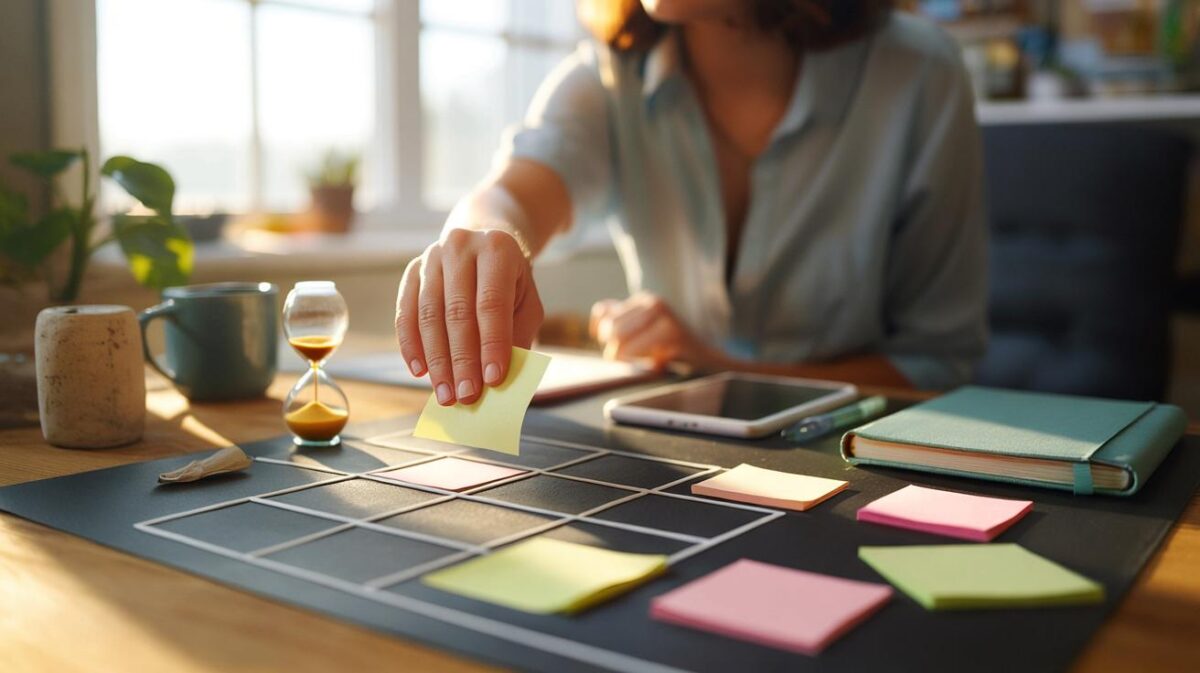One roast chicken and you’re squinting through a sticky film of caramelised fat. When the grime bakes in, most of us give up and shut the door a little faster. Here’s a simple, natural fix that breaks that cycle without fumes, fuss, or forty minutes of scrubbing.
I noticed it last Sunday while the potatoes were crisping: that amber halo framing my oven’s glass like a greasy eclipse. I’d wiped it a dozen times with spray cleaners. Nothing budged the baked-on patch at eye level — the bit that taunts you as you check the crumble.
I tried a timer and a trick I picked up in a neighbour’s kitchen. No gloves, no harsh smell, one jar from the cupboard. The glass went from foggy to clear in the time it takes to unload the dishwasher. There’s a tiny twist that makes it work fast.
The grime that sneaks up on you
Grease on oven glass isn’t just dirt; it’s a lacquer. When fats splatter, they mingle with tiny flour or sugar particles and cook into a polymer-like layer. That’s why a standard spray feels like it’s skating on ice. You’re not touching the glass — you’re touching a baked shell.
We’ve all had that moment when a friend pops round, the kettle’s on, and you suddenly see your oven door in unforgiving daylight. It looks worse than it did last night. You swipe with a tea towel, and the smear spreads like butter on toast. The more you rub, the shinier the stain gets.
There’s a reason. Heat transforms the splatters, cross-linking oils to form a stubborn film that bonds to the microtexture of the glass. Water beads on it; detergents slide off. You need something mildly alkaline with gentle grit to break that bond. Enter bicarbonate of soda — the kitchen staple that does both without scratching.
The 5‑minute bicarbonate trick
Here’s the method. Warm the oven for two minutes at low heat, then switch it off and open the door. The glass should feel slightly warm, not hot. Sprinkle bicarbonate of soda directly onto the pane, a light snow across the worst patches. Dampen a microfibre cloth with hot water and press it onto the bicarb to make a quick slurry.
Work in small circles for 60–90 seconds. You’ll feel the surface change as the slick patch turns to a chalky paste. Wipe the spent paste away with a clean damp cloth, then buff with a dry tea towel or glass cloth. If a line remains at the very edge, run an old bank card along the border to lift the last film, then buff again. Let the sparkle land.
Let’s be honest: no one actually does that every day. So a few guardrails help when you finally tackle it. Don’t soak the door seams — moisture inside the double glass can fog it. Skip steel wool or harsh pads; they scratch and make future grime stick faster. Keep the bicarb on the glass only, away from rubber seals and painted trim. If you’ve got a beast of a patch, repeat the swirl once and call it done. *Your nose will thank you for skipping the heavy-duty sprays.*
Bicarbonate of soda can shift baked-on grease in five minutes. No fumes, no drama, just a quick buff. A reader in Leeds told me she timed it between adverts.
“I thought I’d need a pro cleaner. Two scoops of bicarb and a hot cloth — I could see my roast again.”
- Time: 5 minutes for light-to-medium build-up
- Tool: one damp microfibre + old bank card
- Staple: bicarbonate of soda, straight from the tub
- Finish: damp wipe, dry buff, kettle on
Why this works — and when to tweak it
Bicarb brings two powers: gentle abrasion and mild alkalinity. The fine crystals act like a superfine polish, loosening that cooked-on film without etching the glass. Alkaline pH nudges greasy bonds apart, so the paste lifts rather than smears. Warm glass speeds it along as fats soften a touch, which is why those two preheat minutes cut your effort.
If your door is a war story — years of splatter with a glossy brown band at the bottom — go stepwise. Do the five-minute swirl, wipe clean, then spot-treat the darkest streaks with a second sprinkle. Park the damp cloth on those patches for two minutes like a poultice, then swirl again. You’ll get there without turning cleanup into a workout.
One staple does the heavy lifting, the rest is just rhythm. Some readers like a lemony finish afterward, but it’s optional. If you crave extra shine, mist the cool glass with plain hot water and do a final dry buff with newspaper or a lint-free cloth. That’s your quick win before dinner guests arrive, with the door you don’t need to hide.
Think of this as a reset, not a ritual. The film takes time to build; your clear view should last through several roasts. If splatters happen, a 30‑second swirl while the oven’s still slightly warm keeps things from setting like toffee. When the glass looks clean, it usually is — the trick is noticing the moment before it clouds again and catching it early.
| Point clé | Détail | Intérêt pour le lecteur |
|---|---|---|
| — | Bicarbonate + warm glass + microfibre | Fast result with one safe staple |
| — | Small circular motion, quick wipe, dry buff | Clear, repeatable steps |
| — | No soaking seams or harsh pads | Protects the door and keeps clarity longer |
FAQ :
- Can I use baking powder instead of bicarbonate of soda?Baking powder contains acids and starches that dilute the effect. You want plain bicarbonate of soda for the scrub and alkalinity.
- Will bicarb scratch my oven glass?Used with a damp cloth, bicarb is gentle enough for tempered oven glass. Avoid dry rubbing and avoid scouring pads.
- Do I need vinegar as well?Not for this five‑minute method. Vinegar can be a finishing wipe for shine if you like, but the staple doing the work is bicarb.
- What if grease is trapped between the panes?That’s inside the door assembly. You’ll need to remove the door and separate panels following your appliance guide, or call a technician.
- Is this safe on self‑cleaning ovens?Yes on the glass. Keep paste off the catalytic liners and rubber seals, and stick to the viewing pane only.








